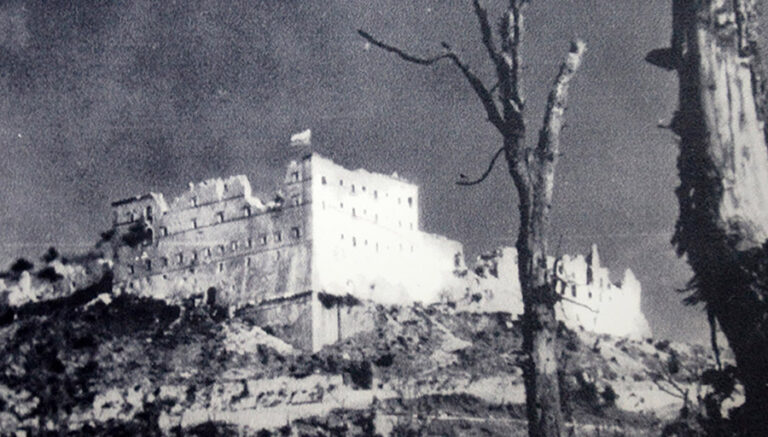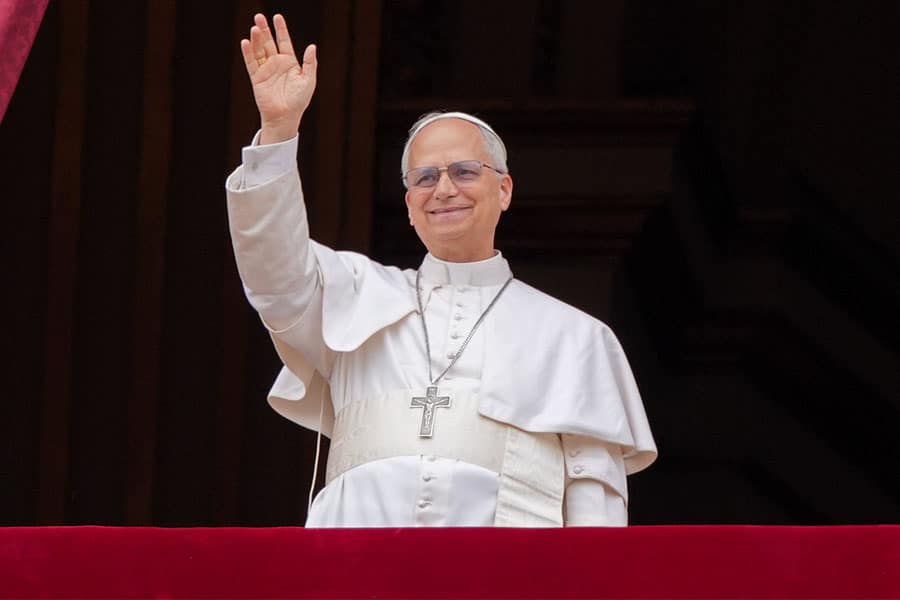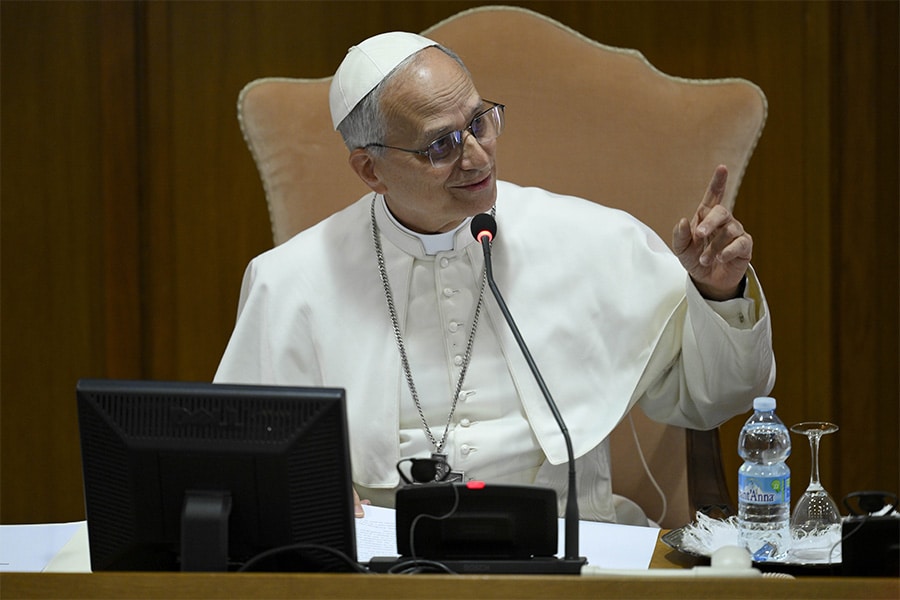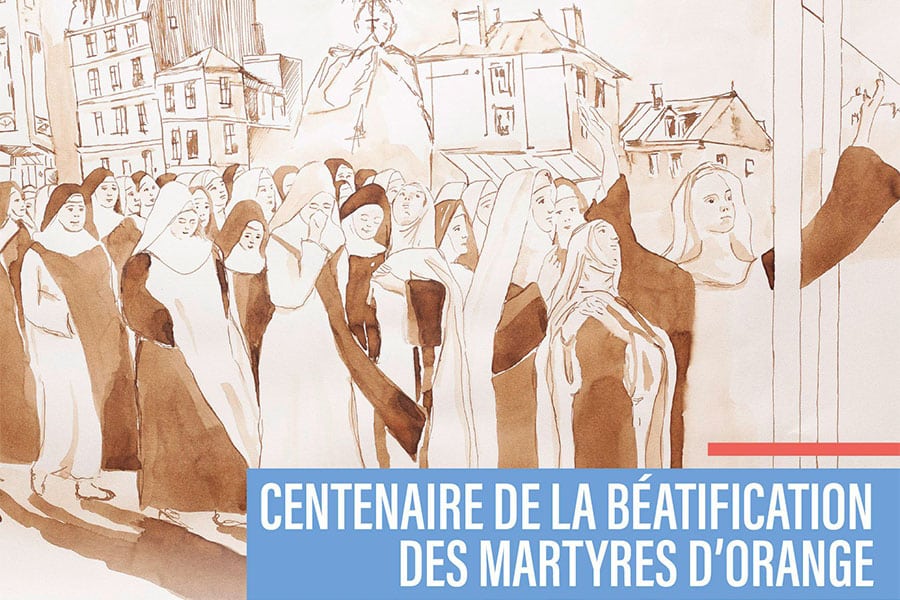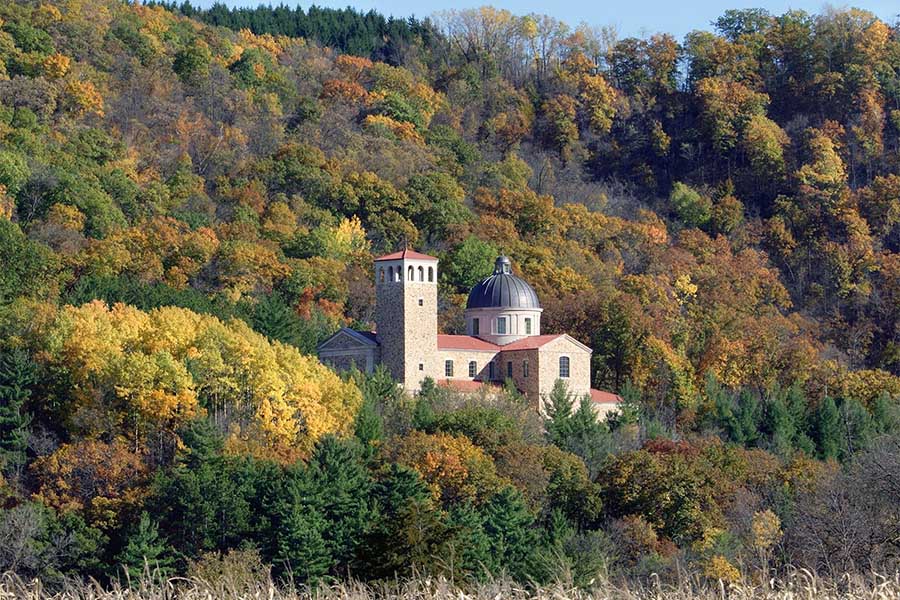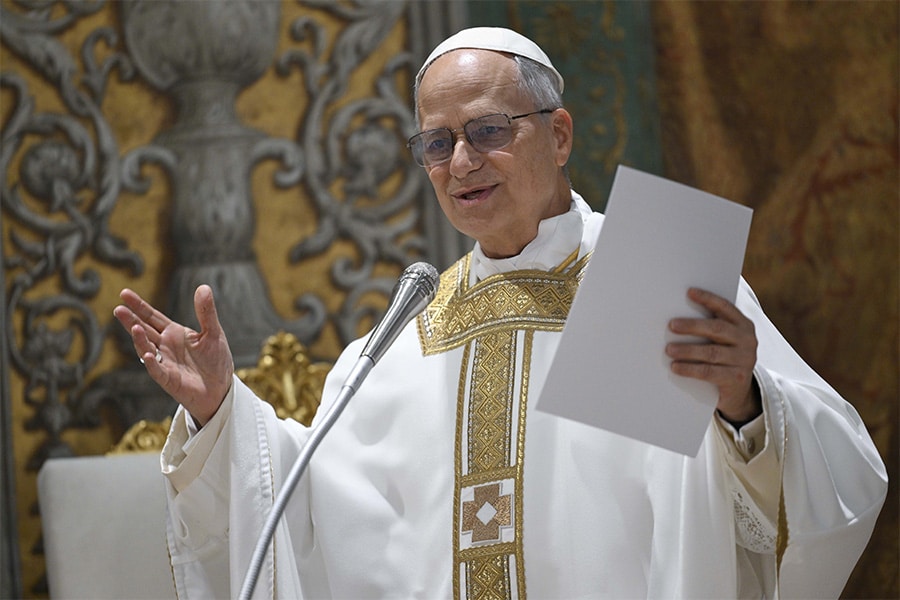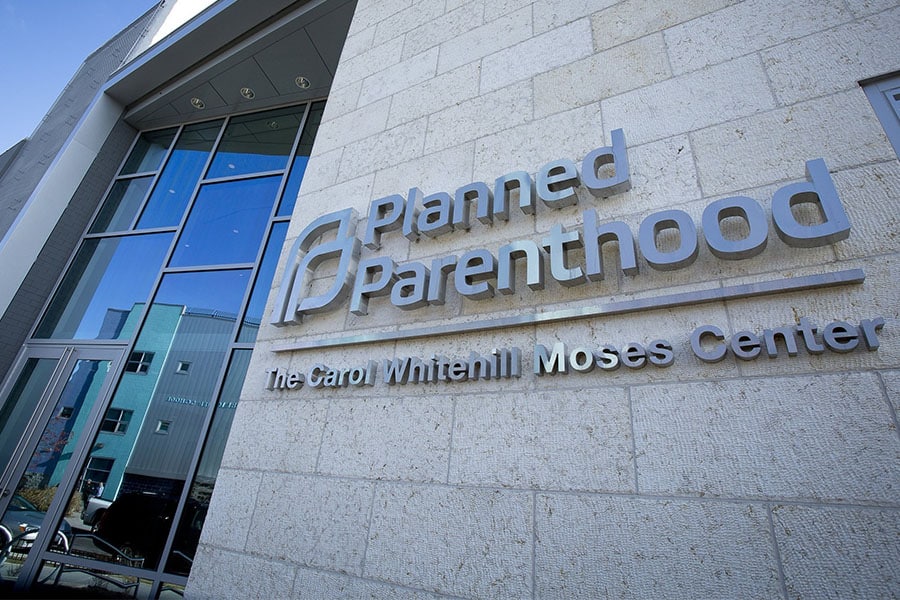ROME (OSV News) — The natural and architectural beauty of a land of great significance for Christians all over the world was reduced to ashes from a seemingly endless wave of bombs and explosives unleashed upon it 80 years ago, on Feb. 15, 1944, when Allied Forces, hellbent on conquering Nazi Germany, bombed Italy’s Monte Cassino Abbey.
Reflecting on the anniversary, Benedictine Father Antonio Luca Fallica, who was appointed as territorial abbot of Monte Cassino by Pope Francis in 2023, told OSV News Feb. 7 that while it is important to remember the past, “it would be fruitless to remain stuck in it.”
“The tragic events of 80 years ago hand us a great responsibility in the present that is open to the future. It calls us to make every effort for peace, so that the horrors of war do not continue to afflict humanity and devastate history,” Father Fallica said.
During World War II, the Allied Forces — desperate to gain the upperhand by seizing occupied Rome, as well as facing heavy troop losses — were convinced that the historic abbey was being used by German forces as an observation point that prevented troops from breaking through the line leading to occupied Rome.
American Gen. Mark Clark, commanding general of the Fifth Army — composed of divisions of American and British soldiers — opposed the bombing of the monastery. However, he was directly ordered by his superior, British Gen. Harold Alexander, commander in chief of the Allied Armies in Italy, to carry it out.
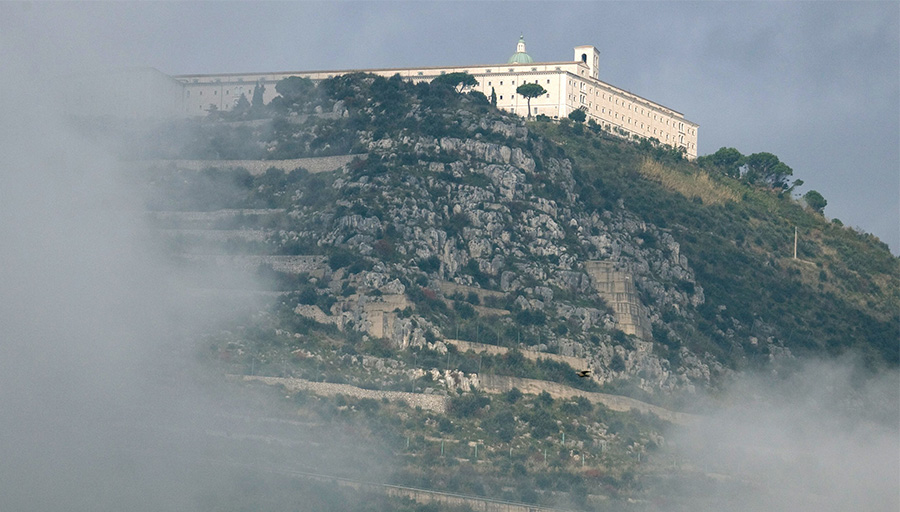
On the eve of the attack, soldiers of the Fifth Army launched leaflets in Italian and English over Monte Cassino, warning residents of the impending attack.
“We have until now been especially careful to avoid shelling the Monte Cassino Monastery. The Germans have known how to benefit from this. But now the fighting has swept closer and closer to its sacred precincts. The time has come when we must train our guns on the Monastery itself,” the leaflets stated.
“We give you warning so that you may save yourselves. We warn you urgently: leave the monastery. Leave it at once. Respect this warning. It is for your benefit.”
On Feb. 15, 1944, over 100 heavy and medium bombers dropped more than 1,000 tons of explosives, turning the centuries-old monastery, which was founded by St. Benedict of Nursia in 529, into a fiery pile of rubble.
In the aftermath of the bombing, it was discovered that there were no German troops at the monastery. Instead, an estimated 230 civilians who believed that such an attack would not reach the sacred edifice were found dead.
“Undoubtedly, the bombing turned out to be a big mistake, from several points of view,” Father Fallica told OSV News, explaining that the attack “did not make it easier for the Allies to carry out military operations.”
“On the contrary, the German army took advantage of the ruins caused by the bombing to settle and entrench themselves,” he said.
“It was really a very significant experience for the Italians,” said Tomasz Lysiak, a Polish journalist and writer who directed the 2022 documentary “Monte Cassino — Ostatni Rozdzial” (“Monte Cassino — The Final Chapter”), which chronicled the battle through the perspective of several Polish World War II veterans.
Speaking to OSV News Feb. 6, Lysiak recalled speaking to a survivor who was 2 years old at the time of the bombing — and “still lives to this day near the abbey” — who told him that his family survived by taking shelter near the room of St. Benedict of Nursia.
“He told me the whole story of his family’s escape. They all survived, however for them, it was one of the strongest signs of the cruelty of war that they have ever seen,” Lysiak said.
“For the Italians, the bombing was a big mistake; a big mistake by the Allies,” he said. “Some people have even said it was almost a war crime. Others say that perhaps the Allies did not have any other choice but to continue this very difficult battle. The decision was truly very difficult.”
Nevertheless, Lysiak told OSV News that while the bombing was a serious mistake by Allied Forces, one also must look to the root cause that led to such a tragic mistake: the threat of Nazism that had gripped the world.
“The lesson here is that one must react first,” he said. “This is important because when we speak about the destruction of the abbey, why don’t we also speak about the destruction of my city, Warsaw: so many cultural treasures (destroyed), the concentration camps, the 6 million Polish citizens that were killed. We cannot forget that! When we speak of the bombing of the Abbey of Monte Cassino, we must remember all the years of war and not just the war in Italy.”
“We must look back to the 1930s when Nazism was born in Germany and fascism in Italy,” Lysiak added. “The Western world did not react earlier and let Hitler do whatever he wanted and these are the consequences.”
It was three months after the bombing and a grueling uphill struggle to conquer the mountain and its German defenses, when the Polish II Corps, commanded by Gen. Wladyslaw Anders, finally broke the Axis line as part of the Allied Forces coalition and conquered Monte Cassino on May 18, 1944.
Father Fallica noted that the Benedictine community at Monte Cassino planned to not only commemorate the anniversary of the bombing, but also celebrate the 60th anniversary of the consecration of the rebuilt monastery’s cathedral basilica.
The abbey’s motto — chosen after its reconstruction — is “Succisa, virescit” (“Having been cut down, it flourishes”), which “bears witness to how the monastic community of Monte Cassino was able to be reborn from serious destruction and crises that have happened, just like an oak tree that, severed at the base, becomes green again,” he said.
Nevertheless, the abbot of Monte Cassino told OSV News that the major takeaway from the tragic anniversary is that “war is always a mistake.”
“This is the lesson we must learn: war — whatever its reasons and the historical motivations behind it — is always and will always remain a mistake,” Father Fallica said. “It seems to me that our abbey, elevated as it is over the surrounding landscape, is like a finger pointing to the heavens, inviting us to raise our eyes and not to give in to the error of a gaze that is bent downward and unable to look up.”
Read More World News
Copyright © 2024 OSV News

